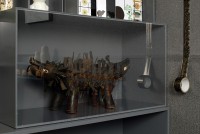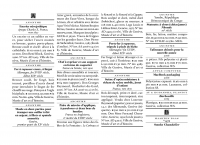Wunder
Stanza
The connection between decorative and fine art staged in the Wunder Stanza derives from a consideration of the issues raised by large-scale production and the effects of industrialization on design.
The methods of industrial production which developed in the second half of the 18th century certainly contributed to modify the traditional perception of the decorative object, affecting its real and symbolic value.
Throughout the 19th century, efforts were made to address what were considered the negative effects of industrialization on design and manufacture of goods. Already in 1847, Henry Cole had set up in England his Summerly’s Art Manufactures, in a short-lived attempt to raise the level of manufactured products, through the collaboration of artists, inspired by the model of the complete artist of the Renaissance.
Engaging in a battle against eclecticism and the decline of taste, reformers such as Cole in England or Laborde in France debated the question of art versus design; they tried to forge an alliance between art and industry, believing that the useful arts could also be fine arts, which finally led to the advent of the figure of the industrial designer. From the 1860s onwards, the efforts to achieve the unity of arts, promoted by Arts & Crafts movement, Aestheticism or Art Nouveau, led to the increasingly shifting frontier between art and design, between fine and applied arts, an ambiguity which is conveyed through the undifferentiated compartmentalization performed in the Wunder Stanza.
Wunder Stanza presents about sixty objects, belonging to the fine art domain as well as to applied arts. Most of them are borrowed from public or private collections in the cantons of Geneva and Vaud. These objects are either ancient or contemporary, some were especially produced for the exhibition. Their confrontation questions their status as artifacts as well as their decorative, practical and/or aesthetic function. The amused eclecticism characterizing the catalogue of items contained in the Wunder Stanza allows for example the juxtaposition, within the same apparatus, of a nail statue from Congo, i.e. a janus dog Nkonde dating from the 19th century (Ethnographical Museum of Geneva) and a prototype of a bouillabaisse plate with a hole in the middle, which prevents all attempts at good manners (Francisco Torres for ECAL, 1999). If the Wunder Stanza is a diverted reference of the “Wunderkammer,” cabinet of curiosities or chamber of wonders which appeared in the Renaissance, it is also the unfolding of Décorum, supplement to the Kunst-Bulletin edited by Zorro & Bernardo (10 issues, 2005–07). […]
Implemented by the designer Sibylle Stoeckli, the charcoal grey “white cube” (Boîte-chambre WS), inspired by the Kaaba in Mecca and calling to mind a Swiss bunker with rounded corners, contains custom-made alcoves for every object exhibited. This kind of tri-dimensional framing emphasizes the space occupied by each object: their body, weight, material and consistency, in a historical perspective at first sight far from the world’s digitalization or computerization. […]
Donatella Bernardi & Ariane Varela Braga in CCC Newsletter nº 6, october 2007, Programme d’études critiques, curatoriales, cyber-médias, HEAD – Haute Ecole d’Art et de Design, Geneva, pp. 3–4.
All installation photos by Michel Bonvin.
Folder graphic design by Niels Wehrspann.











